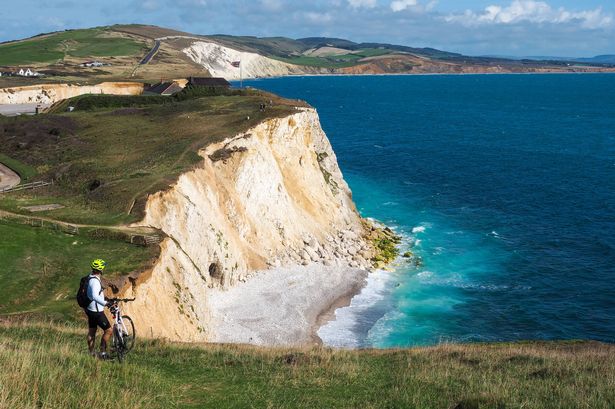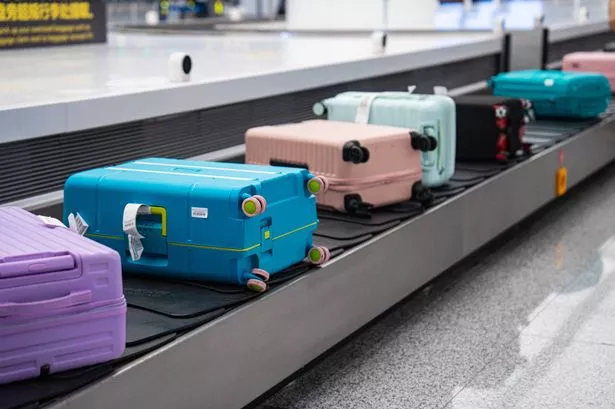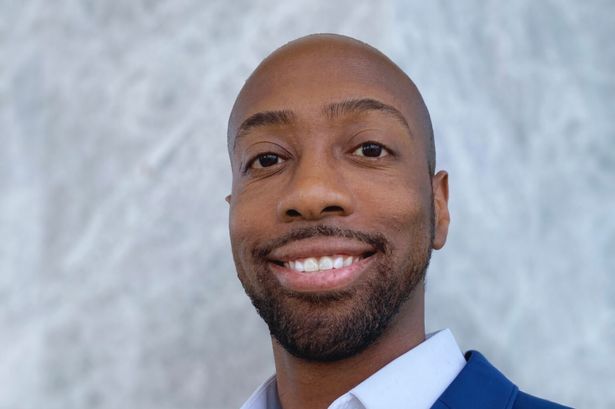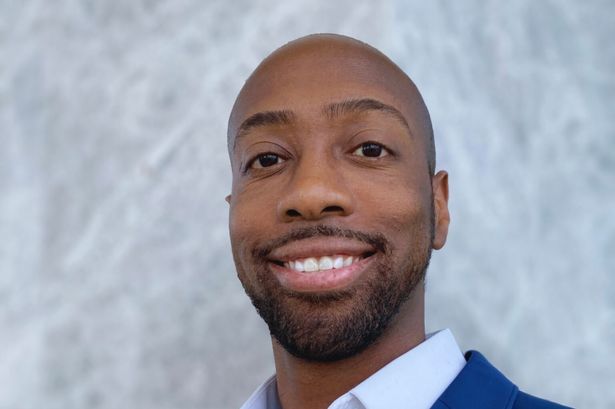What do we know about the Trump plan to disarm Hamas? | Israel-Palestine conflict
US President Donald Trump says Hamas may need to be disarmed ‘violently’ as part of the Gaza peace plan. Hamas has so far not agreed publicly to give up its weapons. Soraya Lennie looks at the key questions over how the process is supposed to work.
Published On 15 Oct 2025
Man who murdered girlfriend in hot tub in Shetland is jailed for life
Ken BanksNorth east Scotland reporter and
Steven GoddenBBC Scotland
 Police Scotland
Police ScotlandA man has been jailed for life after being found guilty of murdering his girlfriend in a hot tub in Shetland.
Aren Pearson, 41, stabbed 24-year-old Claire Leveque to death at his mother’s home in Sandness on 11 February last year.
Pearson denied murder and claimed in court that Ms Leveque had stabbed herself – but a jury found him guilty after a trial at the High Court in Edinburgh.
Judge Lord Arthurson said it was a crime of “exceptional depravity” and “feral butchery” and described Pearson’s evidence in court as “malicious” and “fabricated”.
He will have to serve a minimum of 25 years in prison before he is eligible for parole.
Police said Pearson had a “controlling and violent” relationship with Ms Leveque, and had attempted to degrade and abuse her before the murder.
“The level of violence Aren Pearson inflicted is truly horrifying,” said Det Insp Richard Baird.
 Claire Leveque
Claire LevequeMs Leveque was stabbed more than 25 times on her neck and chest during the attack.
The couple, who are both from Canada, had moved to Scotland in 2023.
The trial was told that Pearson’s late mother Hazel Pearson, who died in May, had dialled 999 on the evening of the murder.
She told police that her son had walked into the kitchen and returned with a knife.
He stabbed himself in the neck and told her that he had hurt his girlfriend.
Ms Pearson then found Ms Leveque in the hot tub, which was in a shed at her home.
“The water was red with blood,” she told police.
“Claire was covered with blood. She had severe injuries to her face.”

Ms Pearson also told detectives that her son had looked like “a zombie” after the attack.
During the 999 call, Pearson took the phone and confessed to the killing. He said he had stabbed his girlfriend about 40 times.
He also confessed to police officers at the crime scene and to a doctor while he was being treated in hospital.
However, giving evidence during the trial he claimed Ms Leveque had struck him, grabbed a knife and then jumped into the hot tub, where she stabbed herself four or five times.
Pearson claimed she had lost her temper after hearing him speak to her father Clint in Canada about how much alcohol she was drinking.
 Police Scotland
Police ScotlandAfter being detained by police, Pearson was taken to the Gilbert Bain Hospital in Lerwick.
The jury heard that he said he had stabbed himself in the neck, consumed brake fluid and driven his Porsche car into the water.
A&E consultant Dr Caroline Heggie treated him for two days following his arrest.
Prosecutor Margaret Barron asked Dr Heggie if Pearson had said something that stuck with her.
She replied: “He said: ‘I’ve been trying to get rid of her for a while’.”
Lord Arthurson said the evidence in the case had been “substantial and compelling”.
‘Quite unimaginable violence’
He told Pearson: “Your much younger girlfriend – your victim in this case – was isolated and vulnerable in Sandness.
“You had from almost the outset of her arrival there subjected her to a cruel campaign of violence and coercive control.”
The judge said Ms Leveque had died “a squalid death of quite unimaginable multifaceted violence”.
“This was a sustained episode of feral butchery,” he added.
“You have sought to blame Ms Leveque for your own assaults against her, and you have, in a grave insult to her memory and to her bereaved family, put forward a defence that Ms Leveque inflicted these catastrophic injuries upon herself – a defence that the jury have unanimously rejected.”
Ms Leveque’s father Clint said his daughter had been “happy, positive and so friendly to everybody”.
Speaking to the Canadian Broadcasting Corporation (CBC), Mr Leveque said his daughter was “a typical daddy’s girl”.
“My daughter texted me every night: ‘I love you dad’. Every night of her life,” he said.
“There’s nothing negative that anybody could possibly say about her.”
Mr Leveque said his daughter, who grew up in Westloch, Alberta, had a love of adventure.
Speaking after the verdict, Ms Leveque’s cousin Hope Ingram described her as “a bubbly, fun girl who brought life to every room that she walked into”.
“I miss her terribly,” she said
“It’s so nice that we can now move forward and just remember Claire instead of thinking of this awful incident.”
‘Hard to comprehend’
She thanked everyone who had helped get justice for her cousin.
Ms Ingram said she hoped that as a result, other victims of domestic violence would be able to “move forward and come forward”.
Hope Saunders, who still lives in Canada, was a close friend of Ms Leveque.
“It’s sickening that someone so bright and so young and so beautiful could have her life taken away from her in the flash of a moment like that,” she said.
“It is hard to comprehend and it gives you that sick feeling in your stomach, and her being so far away in the Shetland Islands breaks my heart even more.
“I don’t want to even think about how scared she might have been in that moment.”
Andrea Manson, the convenor of Shetland Islands Council, said she hoped that the guilty verdict brought some closure to Ms Leveque’s family.
“In a normally safe and caring community the tragic loss of a beautiful young lass is a tragedy that’s being felt by everyone in Shetland,” she said.
British island that gets more sun than Italy over winter and is only a 45-minute ferry ride from mainland
The island was named the sunniest place in the UK by the Met Office – and it gets more sunshine than parts of Italy during the winter months
You don’t need to jet off to far-flung destinations for a dose of winter sun – there’s a UK island that boasts more sunshine than parts of Italy.
The Isle of Wight has been crowned the sunniest spot in the UK by the Met Office, outshining even Milan and Geneva during the winter months.
According to research from Isle Escapes, the island enjoys an average of 78 hours of sunshine per month between November and February.
That’s a staggering 12 percent more than Milan’s 70 average hours, 15 percent more than Geneva’s 68 hours, and 20 percent more than Paris’ 65 average winter sunshine hours.
This balmy climate could be due to the warming effect of the Solent – the strait that separates the Isle of Wight from mainland England, reports the Express.
The island benefits from its own micro-climate, which means it typically avoids extreme weather conditions like heavy snowfall and thunderstorms during the winter season.
Not only is it the sunniest place in the UK, but this is particularly noticeable during the winter, when the Isle of Wight basks in 42 percent more sunshine hours than the rest of the country.
If you’re keen to soak up some of this sun for yourself, the Isle of Wight offers a fantastic island getaway without straying too far from home.
Located just off the coast of Hampshire, the island is renowned as Britain’s dinosaur capital, with the remains of over 20 species discovered on the island.
The Isle of Wight is a top-notch destination for cycling enthusiasts, boasting numerous tracks and paths that crisscross the island.
For those up to the challenge, you can cycle around the island in a day – a well-signposted route of approximately 105km.
While mostly flat, there are some inclines that will give your thighs a workout, and it can get breezy, so be prepared.
If you’re after a more laid-back holiday, the Isle of Wight has plenty to offer. There’s a host of family-friendly attractions, including the Monkey Haven animal sanctuary, home to meerkats, gibbons, and even snakes, all cared for by keepers who love to chat about their work.
History buffs can visit Osborne – Queen Victoria’s country retreat and family home, now open for tours. After her first visit to Osborne, Queen Victoria wrote: ‘It is impossible to imagine a prettier spot’, and she wasn’t wrong.
A trip to Osborne offers something for everyone. Inside the house, you’ll get a glimpse into Royal life as you explore private apartments and grand reception rooms filled with beautiful furnishings and artworks from the Royal Collection.
And if the sun is out (which it likely will be), you can stroll through flower-filled gardens and relax on the beach where the Royal children learnt to swim.
Perfect staycation town with fairytale castle surrounded by azure sea
‘Magical’ village surrounded by wooded glens and streams ‘loveliest ever’
If you’re yearning for a trip to the Isle of Wight, it’s easy to reach from mainland UK. Daily flights depart from Heathrow and Gatwick, or you can opt to fly to Bournemouth or Southampton before hopping on one of the 150 ferry connections to the island which take as little as 45 minutes.
Since the Isle of Wight is part of the UK, there’s no need for your passport – just pack your bag and perhaps a sunhat.
Man behind Channel 4 voiceover shares secrets and one ‘surprising’ thing about job
A presenter has revealed he is the recognisable voice behind the Channel 4 programme introductions we see most days – and shared what a day in the life looks like
When sitting down to watch television on a night, we get used to seeing repeated adverts, familiar channel logos, and presenters. One voiceover artists has shared what really happens before you hear programme introductions on Channel 4.
Sam Darlastone works as a presenter on Kiss radio and has his own podcast called Embarrassing For No Reason. He also works as a voiceover artist, whose voice you may recognise in between programmes on Channel 4. Now he opened up about how it works. On Instagram, he shared a video of him introducing what was on. Sam said: “If you’ve heard this sort of thing on TV, this is how it comes together. So you may have heard that or something similar on TV before that is called a trending menu.”
READ MORE: ‘I’m an American living in the UK and one common thing here is suspicious back home’
Explaining, the presenter added: “So trending menus actually start way before they reach the voice overs here at Channel 4, the team will pick three shows to focus on, some will be old some will be new, well most will be new.”
He noted there will be a mix of genres included in the announcement. He shared: “When I finally get there [to the Channel 4 studios] my job is to spend the afternoon scripting, which sometimes surprises people because in certain voiceover rolls you wouldn’t write your own script, but for these we do.”
Sam added he will be giving a brief with a time slot, typically around 20 seconds, and three programmes to talk about.
He noted: “Then we head down to the recording booth – or some people call it the dungeon.”
He claimed he records with the video of the show in front of him. He also previously admitted that sometimes he makes mistakes and doesn’t always get it perfect on the first try.
“Great to put a face to the voice,” commented one. “I love this geeky stuff,” said another. One called Sam “the coolest guy for the coolest channel”.
“Love a good insight into some art being made,” wrote a third. Another added: “Love listening to your voice.”
Another wrote: “You’re the Channel 4 voiceover! I’ve heard your voice loads while watching Friday Night Dinner and Channel 4 Player.”
One other said: “I will never hear your channel 4 voice overs the same again.”
“I’ve often thought about this – and no can see the face to the voice,” one other added.
2 Ultra-High-Yield Dividend Stocks With Total Return Potential of Up to 41% in 12 Months, According to Select Wall Street Analysts
Juicy dividends are only part of the attraction with these beaten-down stocks.
Don’t just look at share price appreciation. Why? It doesn’t tell the whole story. Thousands of stocks pay dividends. And those dividends often significantly boost the stocks’ total returns.
You can especially make a lot of money when you invest in stocks with juicy dividend yields in addition to tremendous share price growth potential. Here are two ultra-high-yield dividend stocks with a total return potential of up to 41% over the next 12 months, according to select Wall Street analysts.
Kenvue
Kenvue (KVUE 1.98%) ranks as the largest pure-play consumer health company in the world. Johnson & Johnson (JNJ 0.31%) spun off Kenvue as a separate entity in 2023. The new business inherited an impressive lineup of products, including Band-Aid bandages, Listerine mouthwash, Neutrogena skin care products, and over-the-counter pain relievers Motrin and Tylenol .
In addition, Kenvue inherited J&J’s status as a Dividend King. The consumer health company has continued to increase its dividend since the spin-off two years ago. It now boasts an impressive streak of 63 consecutive annual dividend hikes. Kenvue’s forward dividend yield also tops 5.1%.
However, one reason why Kenvue’s yield is so high is that its stock has performed dismally. Revenue growth has been weak. Profits have declined sharply since the company became a stand-alone entity.
More recently, Kenvue announced a shake-up at the top in July with Kirk Perry stepping in as interim CEO while Thibaut Mongon was shown the door. The company also underwent a public relations crisis after President Donald Trump and Secretary of Health and Human Services Robert F. Kennedy Jr. claimed that the use of Tylenol during pregnancy could be linked with autism in children.
Kenvue responded quickly to refute those claims adamantly. So did several healthcare organizations, including the American College of Obstetricians and Gynecologists, the American Academy of Pediatrics, the Autism Science Foundation, and the Society for Maternal-Fetal Medicine.
Several Wall Street analysts think that the worst could be over for Kenvue. For example, Bank of America (BAC 5.11%) and JPMorgan Chase (JPM 2.80%) have price targets for the stock that reflect an upside potential of roughly 29%. If they’re right and Kenvue continues to pay dividends at least at the current level, investors could enjoy a total return of more than 34% over the next 12 months.
United Parcel Service
United Parcel Service (UPS 0.10%) is the world’s largest package delivery company. It operates in more than 200 countries and territories. UPS delivers roughly 22.4 million packages every business day.

Image source: United Parcel Service.
Although UPS isn’t a Dividend King like Kenvue, it has a pretty good dividend pedigree. The company has increased its dividend for 16 consecutive years. It has never cut the dividend since going public in 1999. UPS’ forward dividend yield is a mouthwatering 7.9%.
The bad news is that UPS’ tremendous yield is due largely to its atrocious stock performance over the last few years. Plenty of factors contributed to this decline, including higher costs resulting from a contract with the Teamsters union and lower shipment volumes following the COVID-19 pandemic.
Management’s decision to significantly reduce the shipments handled for Amazon (AMZN 0.05%) is causing revenue to decline. The Trump administration’s tariffs are especially hurting UPS’ business in its most profitable lane between China and the U.S.
However, some analysts on Wall Street are nonetheless upbeat about UPS’ prospects. As a case in point, Citigroup‘s (C 0.66%) latest 12-month price target is around 35% higher than UPS’ current share price. With such an ambitious target and the package delivery giant’s hefty dividend yield, UPS stock could deliver a total return in the ballpark of 42%.
Are these analysts right about Kenvue and UPS?
I’m iffy about whether or not Kenvue and UPS can deliver the lofty total returns over the next 12 months that some analysts predict. However, I think both stocks could be winners for investors over the long run. Kenvue and UPS could also be solid picks for investors seeking income.
JPMorgan Chase is an advertising partner of Motley Fool Money. Citigroup is an advertising partner of Motley Fool Money. Bank of America is an advertising partner of Motley Fool Money. Keith Speights has positions in Amazon and United Parcel Service. The Motley Fool has positions in and recommends Amazon, JPMorgan Chase, Kenvue, and United Parcel Service. The Motley Fool recommends Johnson & Johnson and recommends the following options: long January 2026 $13 calls on Kenvue. The Motley Fool has a disclosure policy.
Australia’s highest court rejects Candace Owens’ visa challenge
MELBOURNE, Australia — Australia’s highest court on Wednesday rejected U.S. conservative commentator Candace Owens ’ bid to overturn an Australian government decision barring her from visiting the country.
Three High Court judges unanimously rejected Owens’ challenge to Home Affairs Minister Tony Burke’s decision in 2024 to refuse her a visa on character grounds.
Owens had planned to begin a speaking tour in Australia last November and also visit neighboring New Zealand.
Burke used his powers under the Migration Act last October to refuse her a visa because she failed the so-called “character test,” court documents said.
Burke found there was a risk Owens would “incite discord in the Australian community” and that refusing her a visa was in the national interest.
Burke found that as a political commentator, author and activist, Owens was “known for her controversial and conspiratorial views.”
She had made “extremist and inflammatory comments towards Muslim, Black, Jewish and LGBTQIA+ communities which generate controversy and hatred,” Burke said in court documents.
Owens’ lawyers had argued the Migrant Act was unconstitutional because it infringed upon Australia’s implied freedom of political communications.
Australia doesn’t have an equivalent of the U.S. First Amendment that states a right to free speech. But because Australia is a democracy, the High Court has decided that the constitution implies free speech limited to governmental and political matters.
Owens’ lawyers had argued that if the Migration Act was constitutional, then Burke had misconstrued his powers under that law in refusing her a visa.
The judges rejected both arguments and ordered Owens to pay the government’s court costs.
Burke described the ruling as a “win for social cohesion.”
“Inciting discord might be the way some people make money, but it’s not welcome in Australia,” Burke said in statement.
Owens’ spokeswoman told The Associated Press on Wednesday Owens would comment on the court decision later on social media.
Burke had told the court that while Owens already had an ability to incite discord through her 18 million followers across social media platforms, her presence in Australia would amplify that potential.
He noted that when Australia’s terrorism threat level was elevated from “possible” to “probable” last year, the national domestic spy agency reported an “increase in extremism.”
Australia has long used a wide discretion under the character test to refuse foreigners temporary visas.
Burke stripped Ye, the U.S. rapper formerly known as Kanye West, of an Australian visa after he released his single “Heil Hitler” in May this year.
Ye had been traveling for years to Australia, where his wife of three years, Bianca Censori, was born.
Burke’s decision to ban Owens prompted neighboring New Zealand to refuse her a visa in November on the grounds that she had been rejected by Australia.
But a New Zealand immigration official overturned that refusal in December, citing “the importance of free speech.”
Owens’ spokeswoman on Wednesday had no information about plans to visit New Zealand.
McGuirk writes for the Associated Press.
Commonwealth Games 2030: India’s Ahmedabad set to host centenary Games
India is set to host the centenary Commonwealth Games in 2030 – the second time in 20 years that the event will have been held in the world’s most populous nation.
The city of Ahmedabad in the west of the country has been chosen ahead of Abuja in Nigeria by an evaluation commission from governing body Commonwealth Sport.
And the decision to hold the Games there in five years time is now expected to be ratified at the organisation’s general assembly in Glasgow on 26 November.
Ahmedabad can boast the Narendra Modi Stadium – the largest in the world, with a capacity of 132,000 – which hosted the Cricket World Cup final in 2023.
The city has a population in excess of five million people, and has even been suggested as a potential bidder to host a future Olympic Games.
“We see the 2030 Games as a powerful opportunity to inspire our youth, strengthen international partnerships and contribute to a shared future across the Commonwealth,” said Dr. P T Usha, president of Commonwealth Games Association India.
The Games first visited India in 2010 when Delhi hosted.
It is the second time Abuja has missed out on staging the Commonwealths, having been overlooked for the 2014 edition in favour of Glasgow.
And it also means Africa’s wait to hold the event for a first time will continue.
The news looks set to end fears that Glasgow 2026 might be the last-ever Games, with Scotland’s largest city having stepped in after the Australian state of Victoria withdrew for financial reasons.
That came after Birmingham took on the 2022 event after the South African city of Durban pulled out.
However, a reimagined format – with fewer sports, athletes and venues – has lessened the cost and enticed India, Nigeria and a handful of other countries to make their pitch to welcome the 74 Commonwealth Sport nations and territories.
A Commonwealth Sport statement said they “assessed candidate cities against a wide range of criteria including technical delivery, athlete experience, infrastructure, governance, and alignment with Commonwealth Sport values”.
It added: “The Commonwealth Sport Executive Board has agreed to develop a strategy for supporting and accelerating Nigeria’s hosting ambitions for future Games, including consideration for 2034.”
The 2030 Games will mark the centenary of the inaugural event held in Hamilton, Canada, in 1930.
All to know about FIFA World Cup 2026 – teams, qualifying, format, draw | Football News
The picture for the FIFA World Cup 2026 became a lot clearer on Tuesday when a number of top teams across the continents booked their place at football’s global showpiece.
The number of confirmed teams has now risen to 28 following the latest round of qualifiers, with another 20 still to be filled by various confederational playoffs, intercontinental playoffs, and – in Europe’s case – the main qualifying stage, which still needs to be completed.
Recommended Stories
list of 4 itemsend of list
England, South Africa and Qatar were among the headline names to book their place at the tournament on Tuesday.
Al Jazeera Sport takes a look at the tournament that the nations around the world are all vying to reach.
When and where is the FIFA World Cup 2026?
The tournament is being staged across the United States, Canada and Mexico. The first match will be played in Mexico City on June 11, while the final will be staged in New Jersey, US, on July 19.
Due to the expansion of the tournament – from 32 teams to 48 – the 39-day event is the longest in its history.
When will we know all the teams for the FIFA World Cup 2026?
FIFA’s intercontinental playoffs will be the last chance saloon for teams around the world to reach next summer’s event. The finale of that route will be on March 31, 2026, less than three months before the World Cup kicks off. The European qualification process runs until March, but most of the remaining confederations will have finished their continental qualification processes long before then.
What are the FIFA intercontinental playoffs?
Once the respective confederations finish their qualification process, FIFA offers two final spots to be contested by the best-placed team from each of the six continental routes that have not already qualified.
When is the draw for the FIFA World Cup 2026?
Although we will not know the full list of teams for the event until the end of March 2026, the draw will take place on December 5, 2025.
28/48 ✅@Aramco | #WeAre26 pic.twitter.com/eaksBnrBYM
— FIFA World Cup (@FIFAWorldCup) October 14, 2025
Where will the draw be held for the FIFA World Cup 2026?
The draw will take place in the Kennedy Center in Washington, DC. US President Donald Trump confirmed the location while speaking in the Oval Office at the White House, flanked by Vice President JD Vance and FIFA boss Gianni Infantino. He did not rule out overseeing the draw itself.
What will the format be for the FIFA World Cup 2026?
With the expansion to 48 teams, the World Cup will now feature 12 four-team groups. That in turn will lead to a round of 32, an extra knockout round to previous editions.
Indeed, the tournament has doubled in size since it was staged in the US in 1994, when only 24 teams competed.
Can Trump move games at the FIFA World Cup 2026?
Trump has been quite clear and consistent on the staging of games within the US, saying he will move the games from any cities that he deems to be unsafe.
On September 26, when Trump was asked about games being moved, he warned: “Well, that’s an interesting question … but we’re going to make sure they’re safe. [Seattle and San Francisco are] run by radical left lunatics who don’t know what they’re doing.”
How will the FIFA World Cup 2026 game staging be split between the hosts?
The US will stage games in 11 cities: Atlanta, Boston, Dallas, Houston, Kansas City, Los Angeles, Miami, New Jersey/New York (joint host region), Philadelphia, San Francisco Bay Area and Seattle.
Canada will host 13 games in total, split between Toronto and Vancouver. Mexico will also get 13 games, which will be played in Mexico City, Guadalajara and Monterrey.
Where will the FIFA World Cup 2026 final be staged?
The US will stage the final, which will be played at MetLife Stadium in New Jersey.
Who are the defending FIFA World Cup champions?
Argentina won the last edition of the FIFA World Cup, beating France in the final of Qatar 2022.
With the game level at 3-3 after extra time, Argentina won the penalty shootout 4-2.
Will the weather affect games at the FIFA World Cup 2026?
The 2025 FIFA Club World Cup was staged in the US, and the heat and resulting thunderstorms proved to be a huge problem for the tournament.
Three stadiums – in Arlington, Atlanta and Houston – have retractable roofs that are expected to be closed due to the summer heat, while Inglewood and Vancouver have fixed roofs.
Which teams have already qualified for the FIFA World Cup 2026?
After the latest round of qualifying matches, here is a breakdown of the confirmed contenders from each of the six regions:
Hosts: Canada, Mexico, USA
Asia: Australia, Iran, Japan, Jordan, Qatar, Saudi Arabia, South Korea, Uzbekistan
Africa: Algeria, Cape Verde, Egypt, Ghana, Ivory Coast, Morocco, Senegal, South Africa, Tunisia
Europe: England
Oceania: New Zealand
South America: Argentina, Brazil, Colombia, Ecuador, Paraguay, Uruguay
Which teams can still qualify for the FIFA World Cup 2026?
Africa: Cameroon, the Democratic Republic of the Congo, Gabon and Nigeria will play off for the final intercontinental spot from the continent. The Confederation of African Football (CAF) has announced November 13 for the first matches, followed by a deciding match three days later.
Asia: UAE and Iraq will vie for one intercontinental playoffs spot when they compete over two legs in the final stage of the Asian Football Confederation (AFC) qualifiers on November 13 and 18.
Europe: 53 of the 54 European teams vying for 16 qualification spots can still confirm their berths, alongside England, as their first-round matches will run until November 18. European qualification will run until March, just before the intercontinental playoffs begin.
North, Central America and the Caribbean: Three spots remain up for grabs, given the World Cup hosts take up three spots already. Bermuda, Costa Rica, Curacao, El Salvador, Honduras, Guatemala, Haiti, Jamaica, Nicaragua, Panama, Suriname, and Trinidad and Tobago have all advanced to the third round, with the winners to be decided by November 18. The three second-placed teams from each group will then fight for the intercontinental playoffs spot.
Oceania: New Caledonia have qualified for the intercontinental playoffs.
South America: Bolivia have qualified for the intercontinental playoffs, having missed out on one of the six automatic qualifying positions.
Anyone visiting European holiday hotspot issued crime warning after string of incidents
Anyone who has a holiday in Rome coming up has been issued a warning. One holidaymaker who has just been to the Italian capital told people to be on ‘high alert’ when visiting
A holidaymaker in Rome has issued a stark warning to fellow tourists heading to the Italian capital after enduring a horrifying experience during her break. Caroline Jansson turned to TikTok to reveal she had been “robbed of all of her personal belongings” and urged others visiting the city to stay alert to their surroundings.
“I’ve just been with the police and they told me they [thieves] specifically target tourists,” she began in a video. She went on, explaining that those with hire cars should stay especially watchful after learning at the police station that numerous others had fallen victim to luggage theft straight from their rented vehicles.
“I talked to one woman who turned around to take a picture and she had her handbag stolen,” Caroline continued.
“There was another man who had his wallet and passport stolen out of his hand – so be very vigilant and look out for each other and each others’ suitcases because literally everything we had with us for the trip is now gone.”
Caroline revealed that consequently, she had lost numerous valuables including her iPad and two laptops in the European hotspot. Luckily one of those was a MacBook, enabling her to trace and find it inside one of the pinched bags – only to discover it had been abandoned in a ditch with no trace of her other belongings.
“We’re going to continue talking to the police and see how it goes,” Caroline said, before issuing a heartfelt plea to her followers to keep an eye out for her luggage if they happen to be in Rome.
In response, another tourist shared their own experience of theft in Rome. “We were robbed in the Rome train station,” they revealed. “Luckily an officer noticed this guy with a bag that didn’t match his look and we got it back. We were so lucky.”
A second person also revealed: “We were robbed, had our van smashed and they stole phones, iPads, handbag, money, camera. Police not interested. We were in a secure patrolled car park.”
Whilst a third TikTok user warned: “A group of three tried to pickpocket me and my husband on a very crowded bus. Just be careful and keep your belongings close to you and be aware.”
The UK government’s foreign travel advice section offers the following guidance for those visiting Rome, meanwhile.
“Thefts from parked cars happen in Rome, particularly in the Colosseum area, Ostia, Milan and Pisa. Thieves also target coastal areas and towns, and motorway service stations. Avoid leaving luggage in your vehicle – even out of sight in the boot – for any length of time.
“Thieves may use a variety of methods to distract you or encourage you to stop your car, including asking for help or directions or pointing out a fictional fault with your car.”
To reduce your personal risk:
- keep sight of your belongings at all times
- beware of thieves using distraction techniques
- avoid carrying all your valuables together in handbags or pockets
- leave spare cash and valuables in a safe place such as a hotel safe
General Atomics’ Gray Eagle STOL Drone Will Be Made In Korea
The next stage in the evolution of the Gray Eagle Short Takeoff and Landing (GE STOL) drone sees General Atomics Aeronautical Systems, Inc. (GA-ASI) team up with South Korea’s Hanwha Aerospace for co-development and co-production of the uncrewed aircraft system, with work set to begin immediately. A demonstrator for the medium-altitude, long-endurance (MALE) drone has already operated from a South Korean amphibious assault ship, but the new partnership will see production of the Gray Eagle STOL for all customers taking place in South Korea.
GA-ASI and Hanwha Aerospace had an official signing ceremony at the Association of the U.S. Army’s (AUSA) main annual symposium today. That ceremony took place alongside GA-ASI’s company-funded Mojave STOL drone, which has been flying for years and is being used as a proof-of-concept demonstrator for the Gray Eagle STOL.

As for the Gray Eagle STOL, this is the latest iteration of GA-ASI’s MQ-1C Gray Eagle UAS. At the center of the Gray Eagle STOL is its ability to operate from remote or austere locations with rough strips and limited logistical support. GA-ASI says the aircraft will be able to operate from semi-improved surfaces, including dirt roads, open fields, beaches, and parking lots. The same capabilities render it suitable for flying from aircraft carriers and big-deck assault ships, too.
In the past, GA-ASI has described the Gray Eagle STOL as its “most rugged UAS design,” although it’s worth noting that the basic MQ-1C Gray Eagle for the U.S. Army already put something of a premium on efficiency and usability. The original MQ-1C Gray Eagle was tailored for warfare in the Middle East, uses a heavy-fuel piston engine instead of a turboprop, and can be operated by a cadre of enlisted soldiers.

Under the new joint initiative, GA-ASI and Hanwha plan to build a production-representative Gray Eagle STOL aircraft, which should take to the air in 2027. The companies will, in the meantime, establish a production line that will be able to provide the Gray Eagle STOL to customers in the United States and South Korea, as well as globally, and which should result in cost savings for the drone. The first deliveries to customers should take place in 2028.
“GA-ASI and Hanwha are committed to investing in this project and building development and production capabilities in South Korea,” said GA-ASI President David R. Alexander. “We’ll be leveraging the expertise of both companies to quickly bring the Gray Eagle STOL to global customers.”

“This landmark agreement marks the beginning of a new phase in U.S.-Korea defense cooperation, extending beyond traditional alliance structures to deliver next-generation, runway-independent UAS solutions that maximize commanders’ options in the face of evolving mission demands,” GA-ASI said in a statement.
The next steps will see GA-ASI and Hanwha Aerospace working closely together to complete the design phase for the drone and then establish a production facility in South Korea. The final assembly and manufacturing of the GE STOL will be the responsibility of Hanwha in South Korea, with GA-ASI handling the final integration. Meanwhile, GA-ASI will continue to produce other Gray Eagle models at its plant in San Diego, California.

GA-ASI says the new partnership “offers the fastest path with lowest risk to operational capability.”
“Co-producing GE STOL in South Korea and the U.S. will create jobs and help Hanwha secure talent in related fields as well as foster our domestic (Korean) UAS industry ecosystem,” said Jae-il Son, president and CEO of Hanwha Aerospace. “Hanwha is poised to become a comprehensive UAS company capable of executing everything from design to production and maintenance based on our capabilities, which span from fighter jet engines to radar and avionics equipment.”
For Hanwha, the Gray Eagle STOL also presents a way of gaining a foothold in the South Korean military. The country’s armed forces already operate a diverse drone fleet, including Israeli-supplied aircraft. However, on the domestic front, this segment is currently dominated by Korea Aerospace Industries (KAI) and Korean Air, both of which already build drones for the South Korean military.
However, GA-ASI has already been working closely with the South Korean Ministry of Defense as it continues to develop the Gray Eagle STOL drone.
Last year, the Mojave demonstrator was used in a demonstration when it took off from the Republic of Korea Navy’s amphibious landing ship ROKS Dokdo, as it was underway off the coast of Pohang, South Korea.

The Mojave has also been used for takeoff and landing trials aboard the British aircraft carrier HMS Prince of Wales in 2023.

Other milestones for the demonstrator drone have included live-fire testing at Yuma Proving Ground, Arizona, using the Dillon Aero DAP-6 Minigun, and operations from a dirt strip to prove its STOL credentials, something we have reported on before. The stated performance of the Mojave includes a takeoff run of 400 feet for intelligence, surveillance, and reconnaissance (ISR) missions, or 1,000 feet when armed with 12 Hellfire missiles.

Clearly, having Hanwha Aerospace onboard the Gray Eagle STOL program, including local production, should make the drone even more attractive to South Korea.
As well as operating from the two Dokdo class amphibious assault ships — the drone doesn’t necessarily need a catapult for launch or arresting gear for recovery — the Gray Eagle STOL could be a valuable addition to the South Korean military’s land-based units.

For the Republic of Korea Army, the Gray Eagle STOL’s runway independence would be a huge advantage during any kind of conflict with North Korea. In the past, GA-ASI has outlined the fact that the drone’s commanders “can choose virtually any bases of operation and take advantage of unconventional locations not normally affiliated with unmanned aircraft or aviation operations as an added level of survivability and surprise.”
In such a scenario, it would likely be in heavy demand for reconnaissance, surveillance, and target acquisition (RSTA), as well as strike. Meanwhile, its manned-unmanned teaming (MUM-T) capability could see it operate closely with the Republic of Korea Army helicopter fleet, including the AH-64E Apache.

The Gray Eagle STOL is also intended, from the ground up, to be rapidly deployed to remote locations by C-130 Hercules cargo aircraft, a type also operated by South Korea. GA-ASI says the drone can be ready to fly from austere locales in as little as 1.5 hours once rolled out the back of a C-130. This makes it ideal for different sorts of distributed and expeditionary operations.

As well as the aforementioned Mojave weapons, the Gray Eagle STOL is planned to be armed with launched effects, a capability that it inherits from the improved Gray Eagle 25M. The latter was developed to provide the U.S. Army with the option to procure a more advanced version of the MQ-1C, which would incorporate various enhancements to better meet the demands of a future conflict, likely to be expeditionary peer conflicts rather than a counterinsurgency fight.

GA-ASI has previously underlined the potential use of this drone to tackle enemy air defense systems in a large and very contested battlefield — just like the one that South Korea could face if it goes to war with its neighbor. In this scenario, the drone would lob its launched effects toward the air defenses before acting as a “quarterback,” relaying data gathered by the smaller drones to other friendly elements, be they aircraft, long-range fires, or other platforms.

At the same time, the growing questions around the survivability of drones like this need to be acknowledged. The Gray Eagle STOL and its relatives are potentially vulnerable even when faced by lower-end adversaries, a fact that has been underscored by the scale of losses suffered by U.S. MQ-9 Reaper drones when faced by Iranian-backed Houthi militants in Yemen. The use of LEs at standoff distances and the addition of self protection and electronic warfare pods, as well as combined force tactics, will help them in the fight in the years to come.
The Gray Eagle STOL would also port other advanced technologies over from the Gray Eagle 25M, including the EagleEye synthetic aperture radar, which can detect and track ground targets out to 50 miles and maritime targets out to 124 miles. GA-ASI is also working to introduce an increased-range active electronically scanned array (AESA) antenna, which is intended to allow it to operate beyond the weapons effects zone of many threat systems.
As we have highlighted in the past, the Gray Eagle STOL would also seem to offer a broad portfolio of capabilities that could be of particular relevance to the U.S. military as it prepares for a future high-end conflict, especially one fought in the Pacific against China.
In the past, GA-ASI has specifically said that the “Gray Eagle STOL might go with American forces into an expeditionary base deep downrange, co-locating with them as necessary to support missions, including delivery of supplies with the range to reach from island chain to island chain for units separate from the main body. Operating from a semi-prepared landing zone, a dirt road, or any paved surface, it expands commanders’ options.”
Other roles planned for the Gray Eagle STOL include logistics, and GA-ASI has explored the idea of underwing pods capable of carrying up to 1,000 pounds of cargo. This could be of particular interest for the U.S. military, as it looks increasingly at diverse distributed logistics chains as an essential requirement for supporting future operations in contested environments, especially in the context of a potential future high-end conflict, including in the Pacific.

With these kinds of peer and near-peer conflicts in mind, the Gray Eagle STOL is also intended to be more resilient to hostile electronic warfare jamming, especially to GPS networks. It will have vision-based navigation that can be used to overcome GPS jamming and have SATCOM anti-jam technologies.
Ultimately, the Gray Eagle STOL should emerge as a drone that’s able to fly a wide range of missions, from a variety of land bases and ships. It’s clear that, with their new partnership, GA-ASI and Hanwha Aerospace foresee interest from operators outside of the U.S. and South Korean militaries, too.
Contact the author: [email protected]
Get airport luggage off the plane first thanks to worker’s ‘little-know’ technique
A secret flight tip could help ensure your luggage is among the first pieces to appear on the carousel once you’ve landed, and it doesn’t involve ‘fragile’ stickers
Airport journeys can be riddled with anxiety, from the nail-biting security queues to the dread of misplaced luggage that only subsides once you spot your case on the conveyor belt. Whilst keeping a watchful eye ensures nobody mistakenly grabs your bag, a clever hack could see you retrieving your suitcase ahead of the crowd after landing.
Travel experts at Escape.com have shared a cunning strategy: check in your luggage as late as possible without risking missing your flight. Airport ramp worker and gate agent Thomas Lo Sciuto revealed the insider knowledge: “Your best option is to be one of the last passengers to check your bags.
“This is because bags will always be loaded front to back on the bag carts.”
Yet timing alone doesn’t guarantee success. Occasionally, it’s down to the way you pack your belongings, reports the Mirror US.
If leaving check-in until the eleventh hour fills you with dread, SmarterTravel discloses that some carriers – such as Delta at London Heathrow Airport’s Terminal 3 – organise luggage by dimensions to achieve proper weight balance aboard the aircraft, suggesting an alternative approach worth considering.
Hand over your case at the check-in desk and curious about its journey afterwards?
Your luggage is sorted into large containers, or “cans”, which can carry multiple bags for easier transport.
As per travel site SmarterTravel: “In other words, how far back your bag ends up depends on the weight of the can and the needs of the plane, not when you check it.”
It’s worth noting that single-aisle planes usually store checked luggage in a holding area before being loaded onto the aircraft shortly before take-off. Thus, suitcases are likely to be loaded in the order they were checked in.
However, checking in early may actually work against you – your bag could be put at the back of the storage space and loaded last, although it would probably be the first to be unloaded.
Want to avoid a lengthy wait at the baggage carousel?
Marking your suitcase as “fragile” could do the trick. News site news.com.au suggests that labelling your suitcase “fragile” can result in ground staff loading your bag last, which means they could unload it first.
Suitcases are also more likely to be processed in batches, meaning the order may not always be the same.
But remember to remove any old “fragile” labels from a previous trip.
You can also jazz up your luggage with ribbons, brightly coloured labels, or a unique name tag so it’s easily spotted.
Travelling with only hand luggage is the quickest way to breeze through the airport.
However, to avoid having to check your bag in, make sure it meets the airline’s specific requirements.
A personal item, often referred to as a small bag, should fit under the seat in front of you and typically shouldn’t exceed 40x30x20cm.
Hand luggage must be stowed in the overhead locker. They usually weigh up to 10kg and are no larger than 56x45x25cm.
Among UK airlines, British Airways typically offers the most generous free hand luggage allowance on its basic fares.
Passengers are allowed to bring one 23kg hand luggage bag (56x45x25cm) and one smaller personal item (up to 40x30x15cm) free of charge.
Jet2 and Virgin Atlantic also allow a free hand luggage bag (10kg, 56x45x25cm) and a personal item. Always double-check with individual airlines before you travel.
Kim Kardashian admits she doesn’t know the price of a carton of milk as fans blast billionaire as ‘out of touch’

KIM Kardashian has sensationally admitted that she doesn’t know the price of a carton of milk.
Fans have now blasted the 44-year-old fashion mogul and billionaire as ‘out of touch’ for not knowing how much simple groceries cost.
Appearing on Alex Cooper’s Call Her Daddy podcast, Kim opened up about how much money she spends on beauty products before dropping her bombshell confession.
Alex asked Kim how much she spends on her glam routine.
She responded, “If I’m filming my show, then they pay for it.
“If I’m working, then they pay for it.
“So, I try to get it all paid for so that I don’t personally have to pay for it.”
The billionaire, who is said to be worth over $1.7billion, then confessed she doesn’t have a concept on what things tend to cost.
Making the candid confession on the podcast, she said, “I mean, I don’t have a concept of what like certain simple things cost.”
She added, “I’d like I’d like to know a little bit more about what a milk carton cost.”
Most read in Entertainment
‘SO OUT OF TOUCH’
On Reddit, one person reacted, “I cant believe she doesnt know the price of a carton of milk! so out of touch.”
Meanwhile, on X, someone else said, “Awww poor rich girl.”
“A million on beauty but clueless about basic groceries? Sounds like priorities are wildly skewed,” penned another.
Kim later confessed to Alex that she wasn’t sure how much her glam costs each year, but said it could be one million dollars before saying how “this hair isn’t cheap”.
Kim’s “out of touch” comment about the price of a carton of milk comes after the reality star has posed while drinking milk on several occasions.
She famously appeared in Fergie’s music video for the hit M.I.L.F. $.
In the video, Kim could be seen drinking milk while donning a sexy ensemble.
She has also posed while drinking milk for various photoshoots in the past, too.
NEW SEASON OF THE KARDASHIANS
This comes after the new teaser trailer for the upcoming season of The Kardashians dropped earlier this week.
Dropping on October 23, season seven will see familiar faces return to their reality roots, as well as huge and scary revelations coming to light.
The season seven trailer dropped earlier this month, with the show’s Instagram account writing alongside it, “A whole different beast.
“Season 7 of #TheKardashians premieres October 23 on @hulu and with #HuluOnDisneyPlus.”
In the trailer, Kim teases, “Some familiar faces are back.”
Khloe then asks, “Is Bob here?” with Robert seen in the shot.
Caitlyn is also seen in the trailer, with her donning sweat pants and a sweater with sunglasses covering her eyes.
Elsewhere in the trailer, it is revealed somebody close to Kim “put a hit out on her life”.
Digital Banking, Sustainable Finance & Africa Expansion
At a roundtable at the bank’s headquarters in Cairo, CIB’s leadership team discusses expansion in Africa, commitment to sustainable finance, growing digital banking tools, and the future for the bank.
Global Finance celebrated the 50th anniversary of Commercial International Bank (CIB), Egypt’s largest private sector bank and a driving force in the transformation of Egypt’s banking sector, by holding a roundtable discussion.
The event, hosted at CIB’s headquarters in Cairo, gathered the bank’s top leadership team to discuss the bank’s history, how CIB has positioned itself as the leader in Egypt’s banking sector, and how it will continue to pursue growth while delivering innovative banking services for its clients.
The panel included:
- CEO and Executive Board Member Hisham Ezz Al-Arab
- Deputy CEO and Executive Board Member Amr El-Ganainy
- Group Chief Finance and Operations Officer and Executive Board Member Islam Zekry
- Global Markets CEO Omar El-Husseiny
- Chief Retail, Commercial Banking, and Financial Inclusion Executive Rashwan Hammady

Hisham Ezz Al-Arab | CEO
Hisham Ezz Al-Arab was reappointed CEO of Commercial International Bank (CIB) – Egypt in September 2024. With over 40 years of international banking experience, he has served as CIB’s chairman (2023-2024), and as Chairman and MD (2002–2020). He also founded and chairs the CIB Foundation, which provides healthcare access for over 7 million underprivileged Egyptian children.
Global Finance: What major milestones has the bank achieved over the past 50 years, and what are some of the lessons learned?
Hisham Ezz Al-Arab: Well, you have to give credit to National Bank of Egypt (NBE) and Chase Manhattan for setting up CIB back in the 1970s, because it changed how commercial banking is being conducted. CIB at the time it was Chase National Bank—was the leader in credit lending. They changed the concept of asset lending into cash flow lending, and that was new. People used to lend against collateral and not against expected cash flow; that was a major change in the way of thinking. This was the tip of the iceberg that led the change. Below that there’s a very solid culture, to accept change, to innovate, to have something new all the time, and that carried on over the years. When I joined the bank in 1999, it was one of the large private sector banks. The management at the time and the board decided that we needed to make what you call a “major change.” We needed to be market leaders, and this was the time the bank made a lot of changes. From 1999 until about 2004, CIB was a market leader, applying all international standards and doing things really not required by domestic regulation but applied internationally.
CIB was the market leader in implementing the Basel III requirements in 2012 for asset liability management, not only for the credit flow and cash flow lending. We started to move to other areas of the commercial economy. Establishing for instance the World Risk Committee, Governance Committee, Immigration Committee, Illumination Committee—all of those things were not required by the Egyptian Law.
In 2005, NBE exited from CIB. We were very meticulous, as a board to make sure that the buyer would add value. And this is where the other journey started, in 2006. A consortium led by Ripplewood in the US became the key shareholders, with three representatives on the board. And this is another era when the bank started to change. We had solid board members who added a lot of value, selecting board members meticulously became a part of our culture. When ADQ bought a stake in CIB back in 2022, the quality of the board members was also outstanding. The critical thing is not the money, it’s the contribution of the board members.

Amr El-Ganainy | Deputy CEO
Amr El-Ganainy has served as deputy CEO and an Executive Board member of CIB since October 2023. He joined CIB in 2004 as general manager, Financial Institutions Group, and he successfully led the department through his strong business relationships in the market on the local and regional fronts.
GF: CIB has a growing presence across Africa with operations in Kenya and Ethiopia. Tell us about this experience and where the opportunities for further cross-border expansion are.
Islam Zekry: CIB’s expansion into Africa reflects our long-term vision to position the bank as a leading regional financial institution, exporting banking excellence into high-growth, strategically relevant markets. Our cross-border growth strategy prioritizes: sustainable value creation over pursuit of scale for its own sake, digital enablement to overcome infrastructure limitations and accelerate access, and facilitation of intra-African trade and investment flows, leveraging Egypt’s pivotal regional position.
Our ultimate objective is to build a resilient, scalable, and commercially viable cross-border banking model that reinforces CIB’s footprint across the continent.
So for an Egyptian bank operating from Cairo, there are two value corridors we can chase. One is the more-than-famous remittance corridor and the other is the East African trade corridor. This is basically the natural expansion for our corporate clients based here in Cairo, and this is where most of the trade exposure for the Egyptian customer is coming from.
Second, the go-to-market was completely different, because when you approach a country like Kenya, where it’s very cloudfriendly, very digitally savvy, very advanced from a payments perspective, we thought what kind of value we could bring to the market? So we brought cash flow lending and enhanced the quality of the payment processes with our global partners. By the end of the year, we will also introduce private and wealth management services.
We are ready to reposition Nairobi as our East Africa headquarters because of huge operational synergies. It’s not about expanding the footprint or putting another flag on the CIB global map; it is about amplifying Cairo and Nairobi’s synergies. We also set an exploration phase in Ethiopia and some other targets on the east coast of Africa, but what matters for us is the value creation.

Islam Zekry | Group Chief Finance and Operations Officer
Islam Zekry is the group chief finance and operations officer at CIB, serving as an Executive Board director and a member of CIB’s Executive Committee and CIB Kenya’s board. He joined CIB in 2004 and became its first chief data officer in 2016, leading data analytics and quant finance platforms.
GF: And where is the room for growth in Africa or elsewhere?
Zekry: We see strong growth potential across East Africa and tradelinked corridors in Northeast Africa. Beyond the continent, the Gulf markets and selected European hubs with strong diaspora links offer promising opportunities in remittances and digital cross-border services.
What differentiates CIB is our ability to combine deep banking expertise with local market insights, digitally enabled platforms tailored for premier banking services and underserved segments, and a client-centric model integrating transaction banking, advisory, and customer advanced and tailored solutions.
As an example, in Kenya, we’re enhancing SME lending through digital partnerships, leveraging the country’s well-developed ecosystem. We’re also advancing digital channels to scale access and deepen client engagement.
Al-Arab: Regional expansion is also about Egyptians outside of Egypt. How can we reach them and how can we facilitate their banking transactions? That’s something that is critical for our future banking services.
GF: Sustainable finance has been a true commitment for CIB. Tell us about the bank’s major achievements in this sector and CIB’s commitment to integrating sustainable finance across the board.
Amr El-Ganainy: CIB launched the first corporate green bond in Egypt, with a value of $100 million. This was a landmark transaction in Egypt and was important in supporting Egypt’s transition to a greener economy. Our aim is to play a pivotal role for all companies, and we are committed to helping the private sector transition to a more carbon-neutral future.
Zekry: At CIB, sustainable finance is not treated as a side initiative, it’s at the core of how we operate and grow.
When we partnered with the IFC to issue Egypt’s first green bond, that was virtually unheard of at the time. Today, that kind of financing is embedded in our business model. In fact, when we launched our five-year strategy just last week, ESG wasn’t a separate chapter, it was present throughout.
As we expand across Africa, a significant share of our growth will come from transitional finance, particularly in agricultural and underserved communities. We’re introducing specialized services in these areas: not just as a development goal, but because they make strong business sense.
Even internally, we’ve evolved how we assess performance. For example, our Green Asset Ratio is now a core part of our capital adequacy review, with a clear target to grow it by additional 1% to 2% annually. That’s how seriously we take it.
And to be clear, this is not just a corporate responsibility exercise. It’s part of our value creation strategy. In fact, transitional finance has been shown to deliver enhanced returns, often generating 50 to 100 basis points above conventional lending. So it’s both impactful and commercially sound.
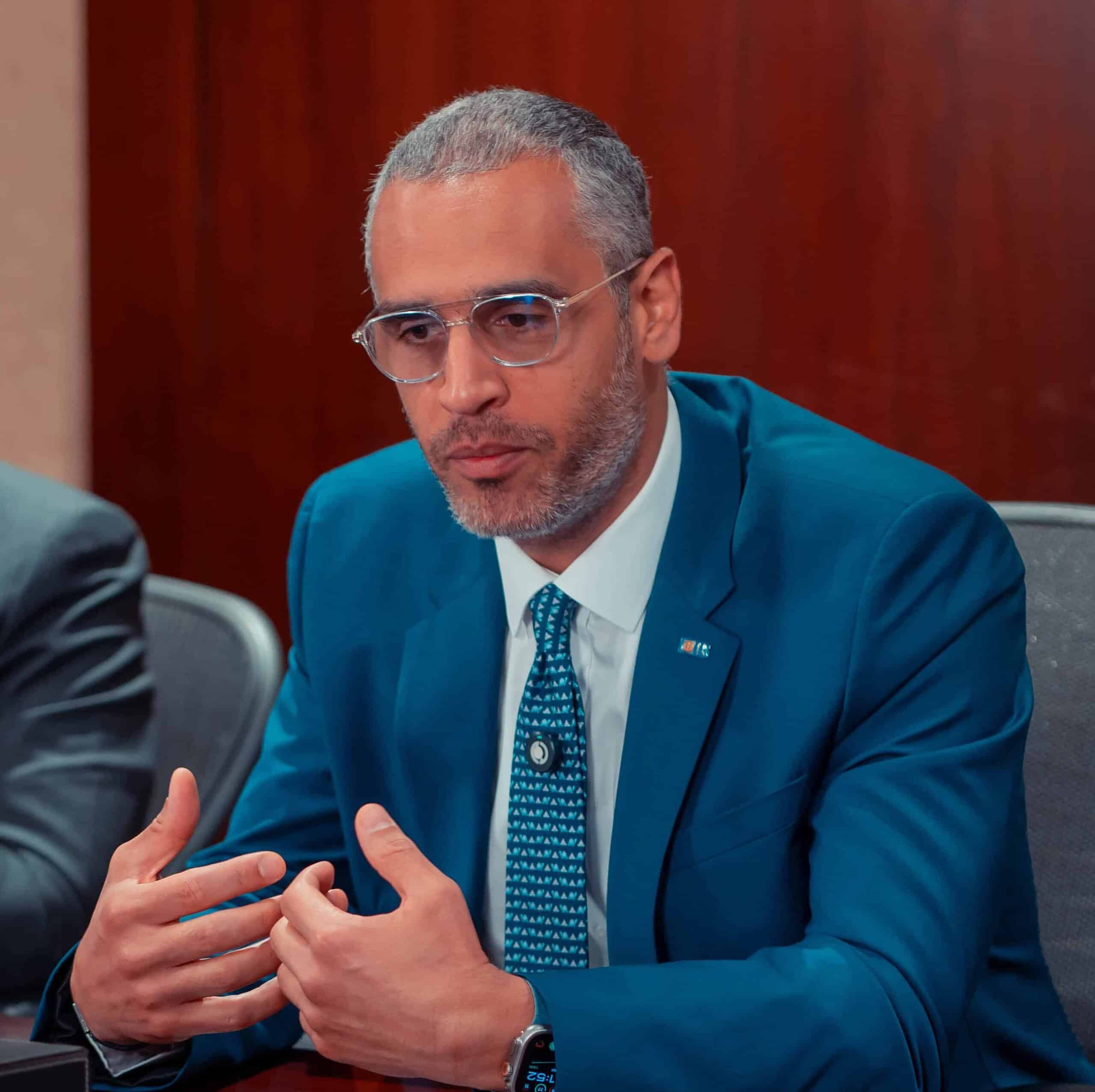
Omar El-Husseiny | Chief Global Markets Executive
Omar El-Husseiny is the Chief Global Markets at CIB and a member of the Bank’s Executive Committee. As Chief Global Markets, he is responsible for key strategic areas including Financial Institutions, Debt Capital Markets, Treasury, Enterprise Governmental Relations, and Global Transaction Banking, ensuring alignment with the Bank’s broader growth agenda.
Mr. El-Husseiny spent his career at CIB, having joined after completing his Bachelor of Business Administration at the Faculty of Commerce at Cairo University in 2001. He holds an MBA in Banking and Finance from the Maastricht School of Management (MsM) and a Graduate School of Banking Diploma from the University of Wisconsin, Madison. In 2019, he completed the Corporate Finance & Credit Program at J.P. Morgan.
GF: Another item on top of the agenda, naturally, is digital banking and transformation. Walk us through CIB’s digital journey.
Rashwan Hammady: Our penetration of digital products across the base, whether in the consumer part, commercial banking, or SMEs or corporate banking, continues to grow over the past couple years. We’ve reached a stage where digital isn’t just about technology, it’s about understanding human needs and behavior. Our core focus now is reshaping our internal culture to understand and serve the next-generation consumer, those who are digitally native, community-led, and brand-critical. Gen Z and digital entrepreneurs will shape the next 20 years of financial services. Our job is to anticipate, not react to, how they live, earn, and make decisions. We’re embedding design thinking, real-time analytics, and personalization into our operating model. It’s less about digital “products” and more about building bespoke and lifestyle-driven experiences.
Omar El-Husseiny: Combining digital transformation and international expansion is no longer a luxury; as a financial service provider, it’s a must. This is where we see the bank moving forward. This is the only way we can expand locally and internationally, therefore, maximizing shareholder value. One takeaway from the past 50 years is how the bank continuously adapts to evolving trends and developments.
GF: How do you use digital tools to target regional expansion?
Al-Arab: For now, there are certain regulatory requirements that we are working on with the regulator, and when that is completed, it will allow us to provide services for individuals overseas. We want to do it seamlessly: simple, easy. The idea is that you are sitting on your sofa somewhere and you want to send money to your family. You don’t need to go to the bank. You want to pay your bills? You don’t need to travel. You don’t even need to make a phone call. It’s a new lifestyle. If you don’t keep developing, you will be left behind.
One thing I want to stress is that CIB is an Egyptian company. Apple is an American company. Where do you manufacture your product? That’s irrelevant. The idea that because we are an Egyptian company, we have to be local and not use the world to grow our market, is wrong. We have to use the world.
Hammady: We were one of the first players in the mobile wallet space. We’ve acquired more than 1.5 million customers via CIB’s mobile wallet. Our strategy now is more geared towards partnerships; we don’t need to build everything. So that maybe we’ll be the manufacturer of products and digital assets and a partner will be responsible for distribution, service, and access. True financial inclusion isn’t about opening accounts, it’s about changing behavior. We’ve realized that literacy and trust gaps in Egypt require a hybrid approach, yes, but more importantly, we need localized design experience. That’s why we’ve built a partnership model where we develop financial products while distribution and education are handled by partners with community reach.
This is how we unlock scale: regulatory-grade infrastructure with grassroots access. The WE partnership will bring banking to millions of new users. They have more than a thousand branches, and this partnership helps us promote financial inclusion across the country. We are expecting to launch that within the coming six to nine months, and that will cater to millions of customers, especially in non-urban communities, small cities, and villages across the country.
El-Husseiny: Egypt’s economy continues to rely heavily on cash transactions. This reliance places additional pressure on the money supply and constrains tax revenue collection, exacerbating inflation and expanding the budget deficit. Therefore, encouraging financial inclusion and digital transformation benefits CIB and the banking sector and is critical for border economic prosperity.

Rashwan Hammady | Chief Retail, Commercial Banking and Financial Inclusion Executive
Rashwan Hammady is chief retail, commercial banking and financial inclusion executive at CIB. With over two decades of experience at the bank, he has spearheaded the launch of several landmark and innovative products and segment propositions, enhancing CIB’s ability to serve its growing customer base of over 3 million clients.
GF: You were mentioning partnerships. Are we talking partnerships with fintechs? With other players? How do you choose your partners?
Hammady: Our philosophy is simple: We build bespoke, compliant, scalable financial infrastructure and services; our partners provide complementary customer reach and engagement. Whether it’s telcoms, e-commerce platforms, or government entities, we choose collaborators who already command trust and attention across Egypt. This allows us to plug into ecosystems where our products become invisible, but indispensable. We’re now scaling this partner-led model not only in Egypt but also as part of our pan-African expansion.
Zekry: Our partnership model is quite unique in that it brings together three core pillars: data, digital, and design.
We’re data-driven, always seeking deeper insights into customer behavior and proactively working to enhance demand capacity. We’re digital by design, using technology to extend our reach and optimize cost-to-serve, especially in high-potential but underserved markets. And we focus strongly on experience design, because we believe that how customers engage with banking still matters, perhaps now more than ever.
When it comes to choosing partners—whether fintechs, infrastructure providers, or even talent networks—we look for alignment on those three dimensions.
We’re also deeply committed to building from the region, for the region. The team here is working tirelessly to reverse the brain drain—attracting top talent from Egypt and across Africa—to help build the banking operating system of tomorrow. We see partnerships as tactical and strategic enablers of long-term innovation.
GF: How is AI opening new doors?
Zekry: While AI has been around conceptually since the 1960s, what’s fundamentally different today is that we’re finally placing these technologies in a meaningful economic and operational context. We’re using AI and data analytics not just to automate, but to understand customer behavior, personalize services, and improve decision-making at scale.
At CIB, we’re investing heavily in building a group-wide data infrastructure: not only in Egypt, but across our African footprint. One clear opportunity lies in streamlining KYC and compliance processes. By creating an integrated data warehouse and sharing verified customer intelligence across our markets, we expect to reduce the cost to serve by 20%-30%. To put that in perspective, I recently came across a study citing EGP2 billion in redundancy costs from duplicative KYC efforts in London’s financial sector. Now imagine the potential savings if we could address that at a pan-African scale. The impact is enormous.
GF: What is the future of CIB?
El-Ganainy: Being Egypt’s largest publicly listed firm and the country’s leading private bank we set our strategy not only to respond to the opportunities emerging today, but to actively shape the Egypt of tomorrow.
We are the leaders in Egypt, and the future is expanding our leadership and investments across Africa and the Middle East.
Zekry: I see CIB evolving into a true business platform: not just in the digital sense, but as a regional and global enabler of investment, innovation, and growth.
We aspire to be a platform that attracts capital, connects businesses, and delivers a new standard of banking experiences—all while being proudly rooted in Egypt. Whether it’s manufacturers expanding from Egypt to the world or clients across Africa and beyond accessing seamless financial services, CIB will be there: facilitating, enabling, and leading.
The future of CIB is not only about being a great bank, but about becoming a trusted gateway to opportunity: for customers, investors, and the economies we serve.
El-Husseiny: I joined the bank 23 years ago, at a time when most of our work was conducted on paper. I’ve taken part in a remarkable transformation, from manual processes to desktop computers, and eventually to digital-first services. CIB will continue to be Egypt’s leading private-sector bank, and our ambition goes beyond national borders. What sets us apart is our ability to adapt to customers’ evolving needs. It’s not just about providing exceptional banking services; it’s about being a trusted financial advisor.
Integrating AI and technologies into our operations is essential. What endures is the customer experience. People will continue to need physical bank branches. CIB has significant room to grow in Egypt. During our strategy process, we asked our staff where they envision the bank in the next 5,10,20, or even 50 years.
The vast majority of our team shared a common vision: we have spent the past 50 years building a strong and successful institution in Egypt, and for the next 50 years, it’s time to expand beyond our borders. As we have developed a proven model, it is time to take that knowledge and expertise abroad, creating shared value through knowledge exchange. Expanding internationally aligns with diversity- a core element of our culture.
We’ve been very successful over the past 50 years in cultivating diversity in Egypt. It’s time to take that success global, where we believe we have the experience and strength to compete.
Hammady: Innovation, for us, is the art of institutional selfdisruption. Over the last decade, CIB has reinvented its business model multiple times: from a corporate-first bank to an inclusive, data-led, multi-segment powerhouse. We are now moving toward a model where the bank is a modular service provider, able to plug into ecosystems across borders. My belief is that our next evolution will see us not only as a bank but as a financial operating system for the region.
Al-Arab: The thing I tell the team and my colleagues is: We are as good as our dreams. You dream small, you remain small. You dream big, you will get there. Be ambitious.
‘Near-secret’ UK train journey that’s 75 miles of scenery named as ‘must-see’ route
The Bentham Line, nestled in the scenic northern English countryside, offers more than just a train ride; it’s an opportunity to immerse oneself in an almost three hour train ride to the coast
Lonely Planet, the renowned travel guide experts, have just unveiled their much-anticipated Best in Travel guide for 2025. The guide features 30 must-visit destinations for the upcoming year and reveals the top 10 travel trends.
One of these trends is the simple joy of train hopping, turning a regular train journey into an exciting adventure by getting off at different stops along the way. The Bentham Line, tucked away in the picturesque northern English countryside, offers more than just a means of transport; it’s a chance to embark on a nearly three-hour journey to the coast.
Labelled as a “near-secret” by the experts, this lesser-known 75-mile train route is predicted to be one of the UK’s best train journeys for 2025, reports the Express.
This historic line, which stretches between Leeds, Lancaster and Morecambe, meanders through charming villages, rolling hills and historic towns, encouraging travellers to step back in time.
For over 170 years, The Bentham Line has been a crucial link for local communities.
The 75-mile (120 km) trans-pennine journey starts in the heart of West Yorkshire, crosses stunning valleys, passes the Ribblehead Viaduct and the Yorkshire Dales National Park, before ending at the scenic shores of Morecambe Bay.
The Bentham Line, a gem in Scenic Rail Britain’s crown, is managed by a community rail partnership (CRP), bringing together local community groups and organisations to enhance the passenger experience.
Setting off from Leeds Station, the journey winds its way westwards, swiftly trading the city’s frantic energy for the peaceful countryside of the Yorkshire Dales.
The service calls at Shipley, Bingley, and Keighley before arriving at Skipton, dubbed the “Gateway to the Dales.”
Boasting a 900-year-old castle and a historic cobbled High Street, this town serves as a beloved day-trip spot encircled by stunning landscapes.
Another favourite destination to disembark is Giggleswick.
This charming village, nestled just beyond the market town of Settle, boasts numerous elegant properties and a historic church featuring captivating architectural details.
The distinctive copper dome of Giggleswick School’s Chapel dominates the horizon, creating a striking landmark across the region.
Every station along this route provides its own enchanting experience.
Step into yesteryear at Carnforth, where the railway station served as the backdrop for the most memorable moments in the 1945 classic Brief Encounter, or alight at Lancaster to discover the Edwardian butterfly conservatory in the ‘Taj Mahal of the North’ alongside Lancaster Castle.
Travellers can marvel at the classic Yorkshire stone architecture and the magnificent Ribblehead Viaduct, a remarkable example of Victorian craftsmanship.
Beyond this point stretches the tranquil Lune Valley, an unspoilt expanse of countryside that traces the River Lune, providing breathtaking panoramas around every bend.
The journey concludes in Morecambe, a seaside town where the vast horizon meets the Irish Sea.
Known for its Winter Gardens, the iconic art deco Midland Hotel and its broad sandy bay, visitors are drawn here to enjoy fish and chips on the seafront after a charming train ride.
Whether you’re a seasoned traveller or simply in need of a breath of fresh air, The Bentham Line offers an effortless route through some of England’s most captivating landscapes.
It serves as a reminder that the finest travel experiences aren’t always about the destination, but the journey itself.
So, hop on board, and let the rhythm of the rails carry you away.
‘I moved to Dubai for new life – now I’m retired at 39 and live off £138k a year’
Jamal Robinson, who achieved his dream of retirement in 2024 and pays himself a whopping £138,000 a year, has revealed what he forks out to live in a “premium” area of Dubai “right off the beach”
A young retiree who pays himself a staggering £138,000 a year has revealed what he forks out to live in a “premium” area of Dubai “right off the beach”.
Jamal Robinson, who decided that he wanted to retire early when he was just a teenager, went from working as a church janitor to a position at Taco Bell for minimum wage, but would ultimately secure roles at Microsoft, IBM, and Amazon.
Jamal, who at the time of speaking was 40, achieved his dream of retirement in 2024. He’s now living as a US expat in Dubai, in the United Arab Emirates, and has managed to save a cash pot worth nearly $4million (about £3m).
A former executive director of generative AI at Microsoft, Jamal accumulated millions in savings and investments and pays himself a staggering figure of about £11,500 every month.
Jamal told CNBC Make It: “What I love most about Dubai is it really caters to people that have been retired and are looking for a lot of services and activities.”
He continued: “I found that, most often, the things that were promised to me in America actually existed here. So, the levels of safety, the levels of like integration of people into society where everyone’s accepted.”
Jamal revealed that he pays himself roughly $15,400 per month (about £11,500), but he tends to spend around $9,000 (£6,700), usually allowing himself around $2,000 for food (£1,500).
A chart displayed Jamal’s spending for December 2024 (which he conceded was a “unique” month). Among his outgoings were $4,429 (about £3,300) for rent, $2,840 ($2,100) for health and wellness, and a discretionary fund of $1,549 (£1,160).
He claimed that Dubai is “actually much cheaper” for him than the majority of the major US cities in which he’s lived. Jamal added that the UAE city allows people to live the “kind of lifestyle” they want and accommodates “a lot” of price points.
A city synonymous with luxury, Dubai is also a popular holiday destination and global hub for leisure and business. Home to more than 200 nationalities, it also boasts the tallest building in the world, the 828-metre Burj Khalifa.
In addition, curious visitors can take advantage of its luxurious malls and traditional souks, and, in further evidence of its wealth, you may even spot the police driving supercars.
According to the Telegraph, it’s expensive to live in Dubai, and expats will have to pay for medical insurance. Despite this, there’s no income tax imposed on people, meaning you keep more of the cash you earn.
It reports that, as of June 2024 (according to figures by CBRE), average yearly rents for apartments and villas were AED 56,000 (about £11,265) and AED 166,000 (£33,393). It also stated that the average salary of someone living in Dubai was £54,647.
Football has paid off for Eagle Rock High’s Melion Busano
Lacking confidence as a 14-year-old freshman, Melion Busano entered high school with one thought in mind.
“Just get the four years over with,” he said.
In September 2022, while getting 30 minutes to try out for the basketball team at Eagle Rock High, his confidence was shaken even more.
“They said if we send you a text, you made the team. I never got that text,” he said. “I was in denial. ‘Maybe they forgot me.’ After the third or fourth week, I was [thinking], ‘Maybe they didn’t send that text.’”
Rejection left him adrift, but then came the moment that changed his life. While carrying around a camera for film class, the JV football coach, Vince Vergara, noticed him, pulled him aside and asked, “Hey, do you want to play football?”
He joined the JV team as a sophomore. His mother had refused to let him play football years ago after seeing the 2015 film, “Concussion.” This time, she told him, “Be careful.”
He started from scratch.
“I had to learn on the fly,” he said. “I didn’t know what type of run plays or nothing. Never played youth football, never played flag.”
Last season as a junior, he made varsity and had 211 yards rushing and two touchdowns. This season, as a much improved 5-foot-10, 195-pound senior, he’s become so valuable that coach Andy Moran said he’s the best running back in the City Section, having rushed for 824 yards and 13 touchdowns going into the Northern League title decider against Franklin on Friday.
“He doesn’t go down and everybody has prepared to stop him and hasn’t,” Moran said.
He had 143 yards rushing against Granada Hills Kennedy, 108 yards against Monrovia, 146 yards against Bell, 141 yards against Marquez and 107 yards against L.A. Marshall.
His father was a Marine for 20 years and came here as a teenager from Belize. His mother is from the Philippines.
“Sadly I have not gone to either but would love to go,” he said.
His first name stands for “My Lion.”
“You’re a lion, so you’re fierce,” his father tells him.
With renewed confidence, Busano has discovered a love for football and a belief he can keep getting better with experience.
He even tried out for basketball again and made the team, then decided to focus on football.
His father told him, “Try again, work harder, make yourself a better person.”
It’s all part of the high school experience — experimenting, exploring and dealing with the positives and negatives that happen to everyone in their teenage years. His younger brother also made the football team.
“Now I’m kicking myself why didn’t I do this my freshman year,” Busano said. “Now I appreciate the little things, about discipline, always do your job, don’t do someone else’s job. It’s helped me grow up as a person. I was very ignorant and blind walking into this. I felt I probably won’t be the worst player but probably second string, but I came onto the field and started. It was, ‘Wow.’”
Soon he hopes to visit Belize or Manila to learn more about his parents’ home countries.
“My dad says my grandma has a house where you can wake up and look out the window and the beach is right there,” he said. “I want to visit both.”
He’s a 17-year-old seeing a whole different world and a whole different future with the help of his football experiences.
Israel: Fourth body returned by Hamas doesn’t belong to any hostages

Oct. 15 (UPI) — Israel Defense Forces said Wednesday that one of the four bodies returned from Gaza in this week’s cease-fire deal did not belong to any of the hostages taken by Hamas.
The office of Prime Minister Benjamin Netanyahu said it has completed the identification process and informed that the families of Uriel Baruch, Tamir Nimrodi and Eitan Levy that their remains have been returned to Israel.
“The government of Israel shares in the deep sorrow of the Baruch, Nimrodi and Levy families, and the families of the fallen hostages,” the prime minister’s office said in a statement.
The IDF said the fourth body has yet to be identified.
“Following the completion of examinations at the National Institute of Forensic Medicine, the fourth body handed over to Israel by Hamas does not match any of the hostages,” the IDF said, according to NBC News. Hamas has returned the bodies of seven hostages out of the 28 bodies believed to be held in Gaza.
Israel’s far-right security minister, Itamar Ben Gvir, called for a halt on humanitarian aid into Gaza, accusing Hamas of not putting enough effort into recovering the remaining dead hostages, The Guardian reported. Hamas negotiators said nine of the bodies weren’t able to be recovered amid rubbling from bombing.
“Enough with the disgrace,” Ben Gvir said.
“Moments after opening the crossings to hundreds of trucks, Hamas very quickly returned to its known methods — to lie, to cheat, and to abuse families and the bodies. This Nazi terror understands only force, and the only way to deal with it is to erase it from the face of the earth.”
The Israel Defense Forces said Nimrodi, a member of the IDF, was taken alive at the age of 18 from the Coordination and Liaison Headquarters base in the Gaza Division, and is believed to have been killed at the beginning of the war.
Baruch, 35, a husband and father of two, was killed on Oct. 7, 2023. The IDF said he was fleeing the Nova music festival and his body was taken back into Gaza. The military had confirmed on March 26, 2024, that he had died.
Levy, 53, was also killed on Oct. 7, 2023, and his body was taken back into Gaza, the IDF said, adding that officials confirmed on Dec. 8, 2023, that he was dead. He leaves behind a son and a sister.
“The IDF shares in the families’ grief, continues to invest all efforts in returning the bodies of the fallen hostages and is preparing to continue implementing the agreement,” the military said.
Israel said Tuesday night that it had received the remains of four deceased hostages that Hamas had kidnapped during its surprise attack on Israel Oct. 7, 2023, that ignited the two-year-long war. A total 251 hostages were taken that day.
The bodies were returned as part of the first phase of a 20-point peace plan that began to be implemented Monday when Hamas released 20 living hostages to Israel and Israel released nearly 2,000 detainees into Gaza and the occupied West Bank.
No living hostages remain in Gaza following Monday’s exchange, though it is believed that the bodies of 20 deceased hostages remain in Gaza.
Israel had said Tuesday that the bodies of the four deceased hostages were transferred to the IDF via the Red Cross inside the Palestinian enclave and were transported into Israel where they were received in a military ceremony.
Video: Freed Palestinian detainee returns to the ruins of his Gaza home | Israel-Palestine conflict

Freed Palestinian detainee returns to the ruins of his Gaza home
After two years in an Israeli jail, Yousef Salem set out on a journey to his house in Gaza. The former detainee, who says he was tortured during his time in captivity, was confronted by the devastation of Israel’s onslaught when he finally arrived home. This is his story.
‘I’m a travel expert – this is my step-by-step guide to finding cheap holidays’
Whether your dream escape involves tanning on a tropical beach or exploring Europe with a backpack, a smart booking strategy can make it a reality. Here are some tips to help you save money when booking your 2026 holiday…
As the bitter cold arrives and we wrap ourselves in our cosiest knitted jumpers, it’s perfectly normal to start fantasising about warmer climes and thrilling getaways.
Whether you’re picturing yourself soaking up rays on a paradise beach or trekking across Europe with just a rucksack, clever booking tactics can turn those dreams into reality.
Making magical memories doesn’t have to break the bank, so here are two travel experts’ step-by-step guides to slashing costs when planning your 2026 getaway, and making sure that your break is budget-friendly as it can be.
READ MORE: ‘I won MasterChef – there’s one European island all foodies need to visit’READ MORE: Full list of new travel rules for Brits heading to Europe for October half term
Book far in advance
“If you can book three to nine months in advance you can often get good deals, especially for packaged holidays or if you’re booking for a family,” says Laura Carden-Lovell, travel expert and head of operations at Transfer Travel.
“We’ve seen that slow travel, so taking longer to get to a destination, has been increasing in popularity,” Carden-Lovell points out. “So, taking the scenic train for example. Trains can be quite expensive so I would recommend booking these far in advance.”
Utilise comparison websites
Fight the temptation to snap up the first bargain that appears in your social media feed, as a little extra patience and detective work could uncover an even better offer.
“Have a look around and use comparison sites to compare prices before you hop onto the first holiday you see,” advises Carden-Lovell. “Comparison sites like Skyscanner and Hopper are brilliant.”
Purchase individual flights
“Booking one-way flights is often a great hack and can be a good way to reduce the prices of flights, as booking a return flight can often be more expensive,” says Carden-Lovell.
Is an all-inclusive break really good value?
Do your homework and weigh up self-catering options. Carden-Lovell suggests, “I think that all-inclusive holidays can be more convenient and potentially cheaper for families and bigger parties, but for solo travellers I think there are ways you could do it cheaper by just buying local food, for example,”.
Consider booking a holiday outside of the peak season to avoid inflated flight costs and crowds
“Shoulder season, typically between September and March (excluding Christmas and New Year), is probably the best time of year to go on holiday to get cheaper tickets,” Carden-Lovell advises. “Most destinations also tend to be less crowded this time of year.”
Jakes Maritz, co-founder of Expat Explore, added: “Timing is everything. If you can, book flights for a Tuesday or Wednesday as midweek departures are often significantly cheaper than weekend travel. It’s also worth checking prices from regional airports, where lower demand can translate into smaller surcharges and more affordable fares.”
READ MORE: ‘I won MasterChef – there’s one European island all foodies need to visit’READ MORE: Portugal introduces strict new tourist rules with hefty fines of up to £1,750 for rule-breakers
Resale platforms might be worth considering if your dates aren’t flexible
“If you can’t be flexible with dates, using resale marketplaces are often a good way to get a cheap holiday package,” says Carden-Lovell. “If someone can’t go on their holiday, they can list it on a resale marketplace like Transfer Travel and you can often get a really good bargain.”
Despite some negative perceptions, Carden-Lovell assures, “I know resale platforms have had a bad rep for not being safe and secure, but they are usually a simple, safe and legit way to do it, rather than Facebook marketplace. Just make sure you check that customer services are verifying each listing and that the platform you are using has a secure payment method.”
Consider trips to the Mediterranean, Eastern Europe or Scandinavia
Carden-Lovell suggests, “I think it is a good idea to stay away from the really popular destinations and to consider going on holiday somewhere like Eastern Europe instead, for example, which is likely to be cheaper in 2026,” He also mentions that “Coolcations are also trending and Scandinavian countries are really good and are generally cheaper to visit now. Mediterranean countries like Greece and Portugal are also looking super cheap in the forecast for 2026.”
Look at alternative accommodation
Why not swap those pricey hotels for something a bit different?
“For budget travellers, places like hostels are often really cheap and Airbnbs can often be a cheap alternative to typical hotels as well,” Carden-Lovell advises. “Staying outside the major tourist hubs is also a good tip to save money on accommodation during the summer holidays.”
Check on Sundays
“When it comes to accommodation, keep an eye on Sundays,” advises Maritz. “Industry data consistently shows that this is the cheapest day of the week to book hotels. Travellers should also consider package deals, as bundling flights, hotels and sometimes activities together often comes out cheaper and protects you from hidden costs.”
Man officially too old to discuss drugs with younger generation
A MILLENNIAL has accepted his age after attempts to talk about drugs with younger colleagues left him sounding like a police officer.
Steven Malley, 37, tried to bond with Gen Z coworkers by asking if they had ever “done a line of Meow Meow”, immediately killing the conversation.
In separate incident he referred to a “tenner bag” of cannabis, causing him to later admit his drug knowledge was “tragically outdated”.
Malley said: “Apparently nobody calls them Es anymore. It’s MDMA, and it’s not a pill, it’s a bag of dust. Also, laughing gas is now something you do at clubs, not the dentist’s.
“I thought I’d seem cool dropping a few drug references, but I just sounded like a government information campaign about to warn them of the dangers of sharing needles.”
Colleague Ellie Shaw, 23, said: “Steve’s drug chat has big narc energy. I always have the urge to check if he’s wearing a wire.
“He kept saying these words like ‘gear’, ‘dope’ and ‘Charlie’, and nobody had a f**king clue what he was on about. It’s like he read Trainspotting as a teenager and thinks that’s still enough to get him by.”
Malley has now decided to avoid the subject of drugs and bond with colleagues over new streaming shows such as Better Call Saul and Dexter.










